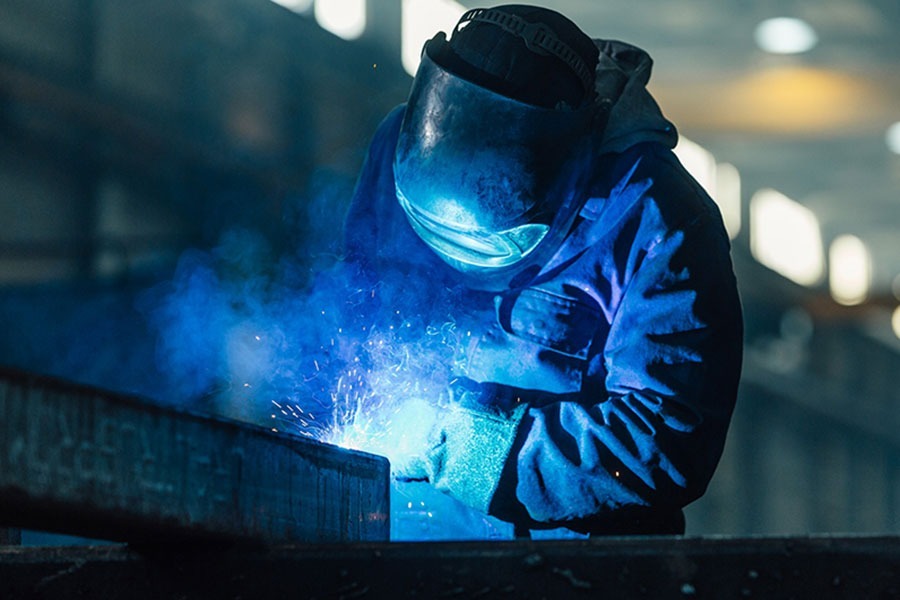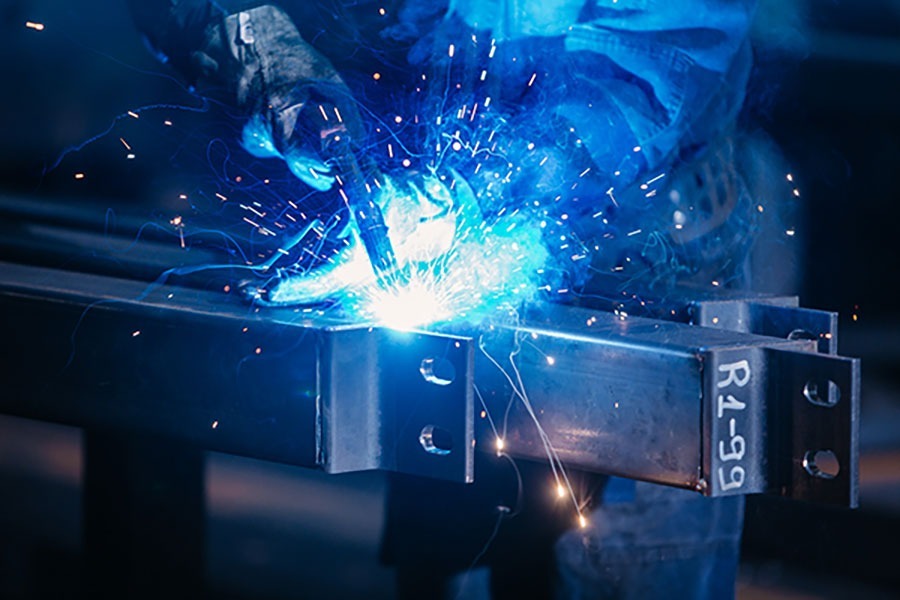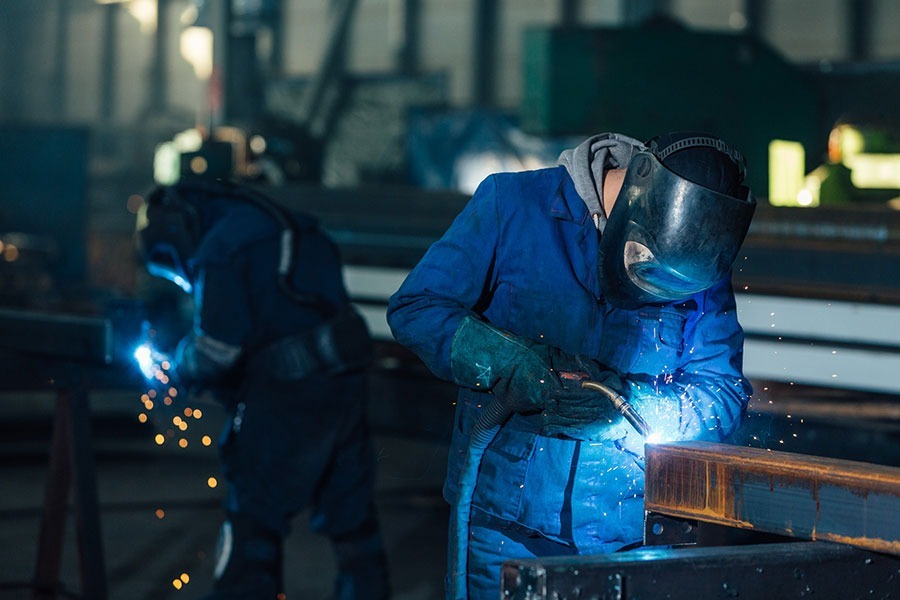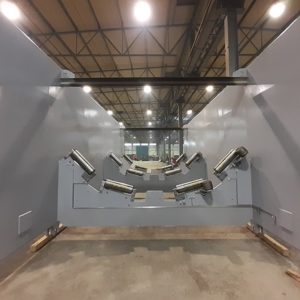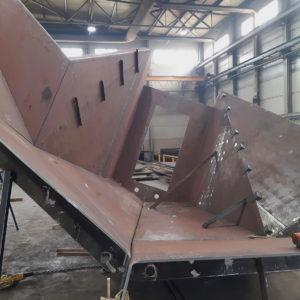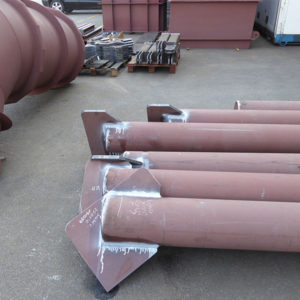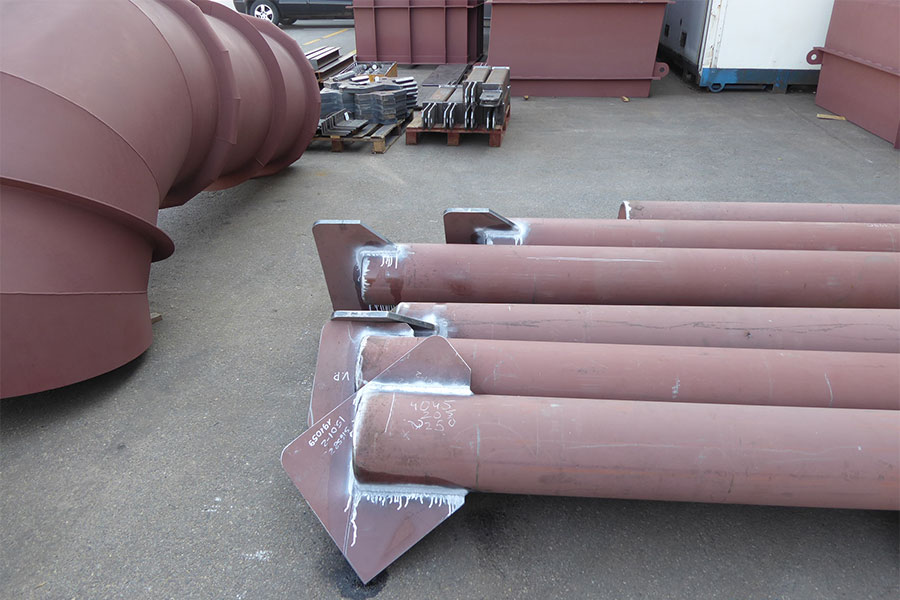Levstal provides sheet metal welding services for various fields like pulp and paper, mining, marine, hydropower, construction, etc.
Sheet metal welding
Sheet metal welding demands higher skills to meet all drawing requirements and succeed at work. At Levstal, we have two assembly workshops equipped with all necessary welding machines, their total area is 3840 m2.
Our certified welders and experienced engineers are ready to cope with all kinds of metal. We guarantee to find the best approach and most applicable solutions for handling your demands.
Available methods:
- 135 – Metal active gas welding (MAG)
- 131 – Metal inert gas welding (MIG)
- 135 – Manual metal arc welding (MMA)
- 141 – Tungsten inert Gas welding (TIG), also known as GTAW
Different welding processes
MIG and MAG (Metal Inert Gas welding and Metal Active Gas welding)
While it is true that Metal Inert Gas welding (MIG) and Metal Active Gas welding (MAG) are presented as separate methods above, we can describe them at the same time since these processes have a lot of similarities – and both of them are often described as Gas Metal Arc welding, or GMAW.
GMAW is a relatively simple form of welding with a low skill requirement, which often makes it a great choice for less experienced or completely new welders. The basis of this process involves a filler metal being fed via the welding torch itself, with the shield gas acting as a protective measure against outside elements. The tip of the welding torch that is usually used for MIG or MAG also creates an arc with the base metal, melting it and allowing for the entire process to happen.
GMAW sheet metal welding is a continuous process that requires a number of parameters being set up beforehand to accommodate for the type of welding that is needed, including base material thickness and other requirements. This also allows GMAW as a whole to be a suitable choice for many different types of jobs – and such versatility is why GMAW is so popular.
As for the very specific differences between MIG and MAG – the biggest one would be the nature of gas that is used as a shielding mechanism. MIG can use multiple variations of the inert gas, such as helium or argon. At the same time, MAG uses active gas variations such as oxygen or carbon dioxide for the exact same purpose. Both MIG and MAG can be used for shipbuilding, steel construction, automotive industry, etc.
MMA (Manual Metal Arc welding)
Another popular shet metal welding method that we have presented on the list above is Manual Metal Arc welding, or MMA. Due to a relatively unusual form of the welding tool, this method is also often referred to as Stick-Shielded Metal Arc welding, or SMAW. This particular method is also considered one of the oldest welding methods, providing a cheap and simple way to weld metals. Its biggest downside is the need to clean up after the welding is done due to spatter that stick welding generates.
This particular metal also creates an arc between the tool and the base material, with the “stick” part of the tool acting as a filler metal. The arc between the stick and the base metal melts the electrode into filler metal, thus creating the weld. To prevent the oxidation process, the electrode stick is coated in a specific material that generates a gas cloud when heated up – this same gas cloud turns into slag once cooled down.
MMA is often used for a lot of different metal welding operations that need to be done outdoors, since the process itself does not involve a constant stream of shielding gas to operate. It is also capable of working with painted, rusted and otherwise contaminated surfaces, which makes it a prime choice when it comes to welding being used in repair operations.
TIG (Tungsten Inert Gas welding)
When it comes to MMA, the electrode stick that is an important part of the process itself is basically a consumable. However, there are many other welding types that are not using electrodes as something to be consumed during the welding process. Tungsten Inert Gas welding, or Gas Tungsten Arc welding (often referred to as TIG and GTAW, respectively) is a welding type that uses a tungsten rod as the electrode that does not get consumed for the welding to be performed.
It is a rather precise welding type that requires a lot of skill from the welder, but also has a lot of advantages, including visually appealing welds, no splatter, and so on. Tungsten Inert Gas welding is also one of the very few welding types that does not have a filler metal requirement in order to perform the welding process. The filler metal can still be added to the process, but it would have to be added manually during said process, as it is not something that TIG as a process performs automatically.
Since TIG welding requires a constant gas flow in order to be able to protect the weld, the welding tool requires a gas tank nearby, meaning that this method is only suitable for indoor operations, with as little outside influence as possible (rain, wind, etc.). This welding type has a lot of popularity when it comes to working with nonferrous metals, and it can also be used for specific repair operations if the tools to be repaired are made of stainless steel, magnesium or aluminum.
Successful Sheet Metal Welding Tips
As we have mentioned before multiple times, welding is a process of connecting two pieces of a specific material, such as thermoplastics, metal or glass. However, there are many different welding types and figuring out what type you need for a specific project or purpose might be complicated. Which is why there are multiple tips that you can use when it comes to welding sheet metal, such as:
- Find a competent company
Even the most common welding types still have a lot of requirements when it comes to both the tool and the person performing the job, which is why picking the correct company for your welding operations is necessary. Levstal has a lot of experience in the field of steel fabrication as a whole and uses only the newest technology in its operations, providing the best experience to our clients.
- Figure out how much heat is needed, adjust if necessary
As a process, welding is heat-reliant, which is why figuring out a specific amount of heat for the job is so important. If there is too much heat, the material in question would simply melt, and the weld is going to outright fail if there is not enough heat. Finding the balance is necessary for the welding as a process to be successful.
- Remember to do test runs
As we have mentioned above, sometimes figuring out specific conditions for the job requires specific parameters and work conditions. Going by this logic, it is always recommended to do test runs in order to find out if the current setup is suitable for the job that needs to be done.
- Choose the correct welding type
Four different welding types that we mentioned above are not the only ones that exist in the welding industry, there are many more – and each welding type works best for a specific purpose or a specific material type. Figure out what works best for the current project is a necessary task, since there are many differences that can be found between welding processes – for example, TIG welding is recommended for projects that use aluminum, and GMAW is at its finest when used to weld iron or steel products.
Welding of various sheet metals
Each metal responds differently to heating grades or the way one can manipulate them. With this in mind, we picked highly skilled specialists only to join our Levstal team and support clients with varied sheet metal welding types like aluminum, iron, copper and stainless steel.
Aluminium Welding
Its plasticity, lightness, and immunity to oxidizing, made aluminum a highly widespread alloy. Levstal specializes in a variety of welding types to administer to our clients’ needs.
Stainless Steel Welding
Stainless steel gained traction thanks to its valuable properties: rust and corrosion resistance, highly sanitary material. Levstal has solid experience in such type of welding as well as a successful track record of cooperation with various industries.
Iron Welding
This operation is popular nowadays as iron is applied in most industries. With our innovative machinery techniques as well as strong background gained throughout the years, we’ll provide you with top services to meet your specific demands.
Copper Welding
Copper’s excellent plasticity in addition to conduction power makes it applicable in varied electrical and electromechanical spheres. Copper-type welding is among the services provided by Levstal for our customers.

